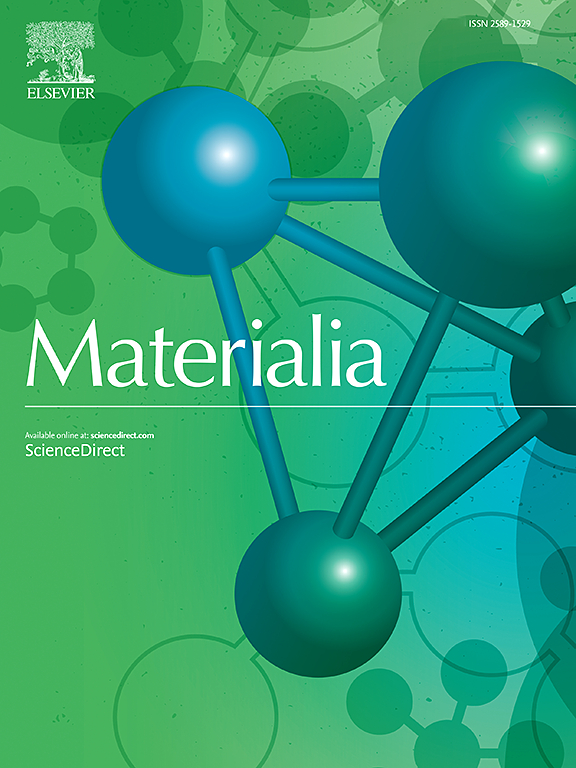Unveiling the relationship of fatigue behavior with the microstructure of 321 stainless steel with gradient structure at 550 °C
IF 3
Q2 MATERIALS SCIENCE, MULTIDISCIPLINARY
引用次数: 0
Abstract
In this work, stress-controlled tension-compression fatigue and uniaxial tensile experiments were conducted at 550 °C on gradient-structured (GS) 321 austenitic stainless steel fabricated by surface mechanical rolling treatment (SMRT). The microstructural evolution, residual compressive stress (RCS) effect, cyclic deformation behavior, fracture and fatigue behavior were unraveled. Uniaxial results indicate that the yield strength and tensile strength of the GS321 specimen are improved by 112 % and 18.6 %, respectively, which is attributed to the thicker GS layer and SMRT-induced martensite strengthening. Fatigue results confirm that the fatigue strength of GS321 is improved and the fatigue life is increased by at least ∼ 10 times. During fatigue loading at 550 °C, the grain size within the surface layer of the GS321 specimen remains stable, but a significant reverse transformation of martensite to ultrafine austenite is observed. Additionally, the RCS within the GS surface relaxes by 67.2 % prior to fatigue, and it further rapidly relaxes with cyclic loading. These results suggest that the RCS had a limited effect on the fatigue properties of the GS321 specimen at 550 °C. The excellent fatigue property of the GS321 specimen is attributed to the thicker GS layer, martensitic phase transformation strengthening, and the synergistic effect. This study can provide guidance for the design and application of stainless steel with superior fatigue performance at elevated temperature.

揭示了321不锈钢梯度组织在550℃下的疲劳行为与组织的关系
在550℃下,对表面机械轧制处理(SMRT)的梯度组织(GS) 321奥氏体不锈钢进行了应力控制的拉压疲劳和单轴拉伸试验。研究了材料的显微组织演化、残余压应力效应、循环变形行为、断裂和疲劳行为。单轴结果表明,GS321试样的屈服强度和抗拉强度分别提高了112%和18.6%,这主要归功于更厚的GS层和smrt诱导的马氏体强化。疲劳试验结果证实,GS321的疲劳强度得到了提高,疲劳寿命提高了至少10倍。550℃疲劳加载过程中,GS321试样表层晶粒尺寸保持稳定,但马氏体向超细奥氏体发生了明显的反向转变。此外,GS表面的RCS在疲劳前松弛了67.2%,并且随着循环加载进一步迅速松弛。这些结果表明,RCS对GS321试样在550℃时的疲劳性能影响有限。GS321试样优异的疲劳性能是由于GS层较厚、马氏体相变强化和协同作用的结果。该研究可为具有优良高温疲劳性能的不锈钢材料的设计和应用提供指导。
本文章由计算机程序翻译,如有差异,请以英文原文为准。
求助全文
约1分钟内获得全文
求助全文
来源期刊

Materialia
MATERIALS SCIENCE, MULTIDISCIPLINARY-
CiteScore
6.40
自引率
2.90%
发文量
345
审稿时长
36 days
期刊介绍:
Materialia is a multidisciplinary journal of materials science and engineering that publishes original peer-reviewed research articles. Articles in Materialia advance the understanding of the relationship between processing, structure, property, and function of materials.
Materialia publishes full-length research articles, review articles, and letters (short communications). In addition to receiving direct submissions, Materialia also accepts transfers from Acta Materialia, Inc. partner journals. Materialia offers authors the choice to publish on an open access model (with author fee), or on a subscription model (with no author fee).
 求助内容:
求助内容: 应助结果提醒方式:
应助结果提醒方式:


